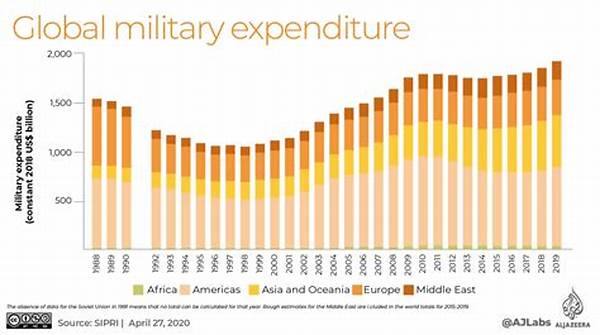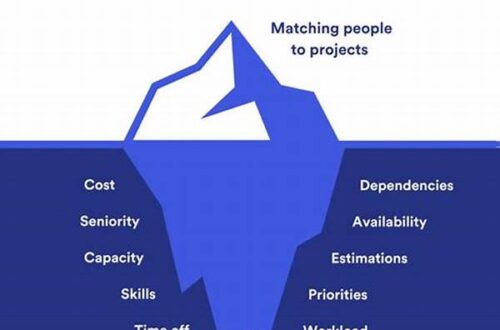Overview of Global Defense Expenditure
In recent years, there has been a notable shift in defense spending trends worldwide. As geopolitical tensions persist and new security challenges emerge, many nations have reassessed their military budgets to address contemporary threats. This reevaluation often leads to increased allocations for defense, encompassing personnel, equipment, technology, and research. Emerging economies, in particular, are observing a rise in defense spending, aiming to secure their interests on both regional and global stages. Concurrently, traditional military powers continue to enhance their capabilities to maintain strategic influence. This global landscape of defense expenditures reflects both immediate security concerns and long-term strategic goals, as countries endeavor to secure their sovereignty and participate actively in international affairs.
Interestingly, the current pattern showcases diversification in investments within defense sectors. Nations are not only focusing on conventional military prowess but are also investing heavily in cybersecurity, space defense, and advanced technologies such as artificial intelligence and unmanned systems. These investments indicate a forward-looking approach to defense, anticipating future warfare dynamics. The ongoing adjustments and increments in military budgets suggest an acknowledgment of complex global threats that necessitate multifaceted defense mechanisms. As these trends evolve, they are expected to shape the defense policies and strategic orientations of governments worldwide substantially.
Factors Influencing Defense Spending
1. Geopolitical tensions remain a significant driver of defense spending trends worldwide, compelling nations to allocate resources for military enhancements.
2. Technological advancements spur investment in defense sectors, as nations seek to innovate and stay ahead in military capabilities globally.
3. Economic growth in emerging markets contributes to increased defense budgets, reflecting an ambition to assert regional and international influence.
4. International alliances and commitments, such as NATO, impact national defense spending trends worldwide, promoting collective security measures.
5. National security concerns, stemming from both conventional and unconventional threats, play a critical role in shaping defense spending trends worldwide.
Regional Perspectives on Defense Spending
The defense spending trends worldwide reveal notable regional disparities. In North America, the United States remains a dominant force, prioritizing defense to maintain its global influence. Europe, in response to both internal and external threats, has seen rising defense budgets among its member states, albeit at varied rates. Meanwhile, in Asia, countries like China and India exhibit significant increases in defense expenditures, driven by regional security dynamics and economic growth. Such spending is largely aimed at modernizing military capabilities and expanding technological capacities to address both regional rivalries and international security roles.
In the Middle East, ongoing conflicts and political instability encourage sustained high defense spending levels, seeking to bolster national security measures. The defense landscape in Africa and Latin America, meanwhile, is more modest yet continues to evolve as nations balance economic constraints with security imperatives. These regional perspectives highlight that while the defense spending trends worldwide share commonalities, the motivations and allocations can differ significantly based on regional contexts and priorities.
Challenges in Global Defense Budgeting
1. Balancing economic constraints with increasing defense demands is a critical challenge influencing defense spending trends worldwide.
2. Managing technological obsolescence requires countries to continually innovate within tight budget constraints, impacting defense spending trends worldwide.
3. Political shifts and policy changes can result in variable defense budgets, affecting defense spending trends worldwide unpredictably.
4. Efforts to enhance transparency and accountability in defense budgets pose ongoing challenges within defense spending trends worldwide.
5. Growing environmental concerns necessitate a reevaluation of defense strategies as part of defense spending trends worldwide.
6. The complexity of global threats demands comprehensive strategies, influencing defense spending trends worldwide recurrently.
7. Ensuring adequate training and support for military personnel remains integral to effective defense spending trends worldwide.
8. Collaborations with private sectors in defense R&D shape defense spending trends worldwide, aiming for cutting-edge advancements.
9. Integrating cybersecurity into defense strategies widens the scope of defense spending trends worldwide.
10. Adapting to non-traditional security threats continues to reshape defense spending trends worldwide.
Future Trajectories of Defense Expenditure
As defense spending trends worldwide continue to evolve, predictions indicate sustained growth in military budgets. Emerging threats, ranging from cyberattacks to space warfare, require nations to adapt swiftly and innovatively to secure national interests. Investments are expected to lean increasingly toward technological advancements and strategic capabilities, including AI and drone technology. The interplay between economic capabilities and security needs will significantly dictate these trajectories. Furthermore, global military collaborations and alliances may see heightened activity, leveraging collective resources for more effective threat management. These future trajectories are set to influence global power dynamics and dictate the pace and nature of international relations.
Moreover, the focus on sustainable defense spending is poised to gain traction as environmental issues become integral to national security assessments. The defense spending trends worldwide will likely reflect a balance between immediate security requirements and broader ecological impacts. As such, countries may strategize to harmonize defense objectives with sustainable practices, showcasing a more holistic approach to national and global security. This foresight into defense expenditure trajectories underscores the complexity and dynamism that characterize the defense spending trends worldwide, shaping geopolitical landscapes in the years to come.
Environmental Considerations in Defense Policies
The relationship between defense spending trends worldwide and environmental considerations represents a burgeoning area of focus. With growing awareness of climate change and ecological degradation, nations are increasingly seen to scrutinize the environmental impact of military activities. Defense policies are gradually integrating sustainability principles, reflecting a shift towards eco-friendly military practices and technologies. This transformation is vital in aligning military objectives with global environmental goals, enabling countries to uphold security imperatives while mitigating environmental harm.
In the context of defense spending trends worldwide, this convergence of defense and environmental agendas necessitates innovative solutions. Investments in green technologies, energy-efficient systems, and sustainable logistics are gaining prominence. Moreover, the adaptation of military infrastructures and operations to withstand and respond to environmental challenges, such as natural disasters, is crucial. As countries navigate these dual imperatives, defense spending trends worldwide are anticipated to progressively reflect a commitment to balancing military efficacy with environmental stewardship, fostering a more sustainable model of national and international security.
Summary of Global Defense Expenditure Trends
The defense spending trends worldwide emphasize a diverse and ever-evolving landscape. Current trends underscore a strategic balance between traditional military capabilities and innovative avenues, addressing emerging global threats in varied dimensions. Nations are prioritizing technological advancements, with substantial investments being directed towards cyber defense, AI, and space security. These shifts represent a broader understanding of defense in the context of modern geopolitical challenges. Additionally, the regional dynamics influence expenditures variably, reflecting localized security imperatives.
Concurrently, the defense spending trends worldwide are shaped by economic, political, and environmental factors. The intricate relationship between these determinants and defense strategies enunciates the complexities of maintaining national security in a rapidly transforming world. As countries strive to address both present dangers and future uncertainties, defense expenditure policies continue to adapt dynamically. This holistic perspective on defense spending trends worldwide not only reflects contemporary security concerns but also sets the foundation for future defense strategies that are both robust and adaptive to unforeseen challenges.





